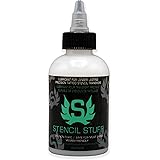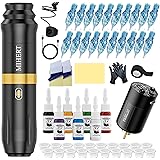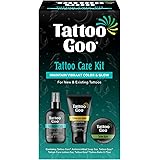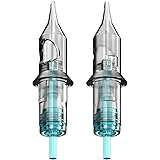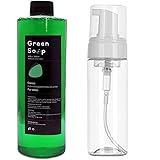Embarking on the journey to become a tattoo artist can feel overwhelming, especially when faced with a multitude of choices regarding equipment and learning paths. This supplementary guide expands upon the essential insights presented in the video above, offering a structured approach for individuals who are just beginning to explore the world of tattooing.
Essential Equipment for Aspiring Tattoo Artists
Starting your tattooing practice necessitates certain fundamental tools, yet this initial setup is often overcomplicated by many beginners. A minimalist approach is recommended, allowing for gradual expansion of your toolkit as skills develop.
The core objective is to acquire items that facilitate safe and effective practice without unnecessary extravagance. Focus should be placed on quality over quantity, particularly for components that directly impact the learning experience.
Necessary Supplies for Initial Practice
Several everyday items are indispensable for maintaining a clean and organized workspace. Tissues or wet wipes, for instance, are crucial for promptly cleaning the practice area and equipment during sessions. These small details contribute significantly to developing professional habits from the outset.
Regarding inks, a focus on black and gray tattooing is frequently advised for beginners. This approach allows for the mastery of foundational techniques that are universally applicable, whether one eventually transitions to color or specializes in monochrome work. Understanding the nuances of single-color application provides a robust base for future endeavors.
Selecting the Right Needles
A diverse selection of needles is required to experience various tattooing sensations and effects. Learners typically benefit from experimenting with liners, round shaders, and magnum needles in multiple sizes. This exposure helps in understanding the different applications and how each needle type interacts with the practice medium.
For example, small liners are ideal for fine details, while larger magnums are used for broader shading. A comprehensive list of recommended needles is often provided within structured learning programs, guiding beginners through this crucial selection process.
Tattoo Machines and Power Supplies
A reliable tattoo machine and power supply form the heart of any tattooing setup. Battery-powered machines, which offer freedom from cables, are often suggested for beginners due to their simplicity and ease of use. These integrated units minimize setup complexities, allowing new artists to concentrate on technique.
Conversely, traditional coil machines or pen-style machines requiring a separate battery pack also serve their purpose. The key consideration for new tattoo artists is finding a machine that is comfortable to handle and provides consistent power, fostering a smoother learning curve.
The Importance of Practice Skins
When learning to tattoo, the use of high-quality fake skins is paramount. These specialized surfaces are designed to mimic the resistance and texture of real human skin, providing a realistic practice medium. Investing in superior fake skins prevents early frustration and ensures that learned techniques translate effectively.
Numerous fake skin options are available, ranging from inexpensive choices to professional-grade products. Experienced artists consistently recommend specific brands known for their durability and responsiveness, helping beginners avoid inferior materials that can hinder progress.
Auxiliary Tools for a Complete Setup
Storing inks neatly requires dedicated ink cups, which come in various sizes to accommodate different amounts of ink. Additionally, applying ointment to the practice area is a valuable habit, even when not tattooing human skin. This practice keeps the surface lubricated and clean, mirroring the protocols followed in professional settings.
Creating accurate stencils is another non-negotiable step in the tattooing process. Stencil paper and transfer solutions allow designs to be precisely transferred onto the fake skin, ensuring that the outline is accurate before any tattooing begins. This precision is foundational for all subsequent steps in tattoo application.
Ensuring a Sanitary and Realistic Workspace
While practicing on fake skins, the risk of disease transmission is absent, yet wrapping equipment remains a critical habit to cultivate. Machine wraps and station coverings for surfaces like arm rests simulate a sterile environment, teaching proper hygiene from the start. This attention to detail prepares aspiring tattoo artists for eventual work on human clients.
An adjustable arm rest is also a highly recommended addition to a beginner’s workstation. It allows for manipulation of the practice surface angle, making the tattooing experience more realistic and adaptable. This ergonomic consideration helps in developing comfortable and sustainable working postures.
A Structured Path to Learning Tattooing
The journey to mastering tattooing is best approached through a structured curriculum, much like any other complex skill. Unlike the often haphazard self-teaching methods found online or the scarcity of traditional apprenticeships, a well-designed program offers a logical progression of learning. This ensures that fundamental skills are solidly established before moving on to more advanced techniques.
A systematic curriculum functions like a GPS, guiding individuals from an initial understanding to proficient application in the most efficient manner possible. This framework prevents common pitfalls where learners jump between disparate topics, leading to fragmented knowledge and slow progress.
Initial Steps: Machine Handling and Basic Lines
The first stage of structured tattoo training typically focuses on basic machine handling and understanding the relationship between hand speed and machine speed. This foundational knowledge is crucial for controlling the needle effectively. Learners are introduced to the theory behind needle depth and penetration, essential for consistent line work.
The absolute simplest form of tattooing, the straight line, is emphasized early on. This methodical approach ensures that fundamental motor skills are developed without the distraction of complex designs. Repetitive drills of straight lines, followed by curved lines and circles, build muscle memory and precision.
The Power of Drills for Rapid Improvement
Dedicated practice drills are an integral part of accelerated learning in tattooing. These exercises isolate specific techniques, making every mistake immediately visible and forcing rapid improvement. For instance, an imperfect straight line immediately highlights wobbles or inconsistencies in hand movement, prompting immediate correction.
Such drills maximize learning efficiency by removing the artistic complexity of designs, allowing full concentration on mechanical proficiency. Through consistent repetition, the necessary muscle memory and control are developed, which are vital for translating learned skills into actual tattoo designs.
Progressing from Line Work to Designs
Once basic line work drills are sufficiently practiced, the next logical step involves applying these skills to simple designs. These early designs are carefully chosen to incorporate all previously learned line techniques without introducing new complexities like shading. This allows the beginner tattoo artist to integrate their foundational skills into a cohesive piece.
The focus remains on clean, consistent lines, demonstrating the ability to execute a complete outline. This stage builds confidence and provides a tangible measure of progress before more intricate elements are introduced. It confirms that the core drawing and machine control abilities have been established.
Mastering Shading Techniques
Shading is a complex aspect of tattooing that adds depth and dimension to designs. A structured learning path introduces shading progressively, starting with the most basic principles to ensure a solid understanding of how light and shadow are created on skin.
Understanding the theoretical basis of shading, such as how different needle movements or depths create darker or lighter tones, is paramount. This theoretical knowledge provides the foundation for practical application and experimentation.
Introduction to Dot Work (Pointillism)
Pointillism, or dot work, serves as an excellent entry point into the world of shading. This technique involves creating varying degrees of lightness and darkness by adjusting the density of individual dots. It teaches control over the machine and a nuanced understanding of how small marks combine to form a cohesive shade.
Similar to line work, dot work is initially practiced through drills, allowing the learner to focus solely on the technique itself. Subsequent designs are then executed using dot work, reinforcing the newly acquired skills within an artistic context. This step-by-step approach simplifies what can initially appear to be a daunting technique.
Exploring Advanced Shading Methods
After dot work, the curriculum expands to include various shading methods such as whip shading, brush shading, and packing. Each method produces distinct textural and tonal effects, requiring specific needle movements and machine settings. These techniques are typically taught with the round shader needle initially, as it is versatile and forgiving for beginners.
Whip shading, for example, involves a flicking motion to create soft, feathered edges, while packing uses a more concentrated movement to achieve solid, saturated areas. Drills for each method are crucial, followed by designs that specifically utilize these techniques, ensuring proficiency with the round shader.
Utilizing Magnum Needles for Shading
The magnum needle, known for its ability to cover larger areas efficiently, is introduced once proficiency with round shaders and basic shading methods has been achieved. Magnums are often favored for their smooth blending capabilities and capacity to deliver even saturation, making them ideal for larger pieces and more complex shading transitions.
Learning with magnums follows the same pattern: extensive drills to understand their unique feel and application, followed by designs that specifically leverage their strengths. This progressive learning ensures that each tool is mastered in sequence, leading to comprehensive skill development in tattooing.
Beyond the Basics: Continuous Growth and Community
Achieving initial competence in tattooing, often within a timeframe such as 30 days for fundamental skills, is just the beginning. The path to becoming a truly masterful tattoo artist is an ongoing journey of learning and refinement. Long-term development involves moving from basic competence to artistic excellence, a process that can take many months or even years of dedicated practice.
The ultimate goal of structured programs is to equip aspiring tattoo artists with the core abilities—lining, shading, and an understanding of various needle types—that serve as a springboard for advanced artistry. With a solid foundation, individuals can then confidently tackle more intricate designs, including complex portraits and elaborate color work.
The Value of a Supportive Community
Joining a supportive community is incredibly beneficial for aspiring and established tattoo artists alike. These online or in-person groups provide a safe space for sharing progress, asking questions, and receiving constructive feedback. Unlike some public forums, a positive community fosters encouragement rather than criticism, which is vital for new artists.
Within such communities, learners can connect with peers who share similar goals and challenges, facilitating mutual growth. The collective experience and shared knowledge help navigate the learning process, providing motivation and practical advice that is often hard to find elsewhere in the tattooing industry. Engagement with like-minded individuals can significantly accelerate skill development and build confidence.


